Why you can trust Tom's Hardware
The RTX 4070 Ti Super makes the most sense to us as a 1440p gaming solution — which is a close stand-in for 4K with DLSS Quality mode upscaling. So that's where we'll start our benchmarks.
We have 15 games and 18 charts, with the "high level overview" showing the geometric mean across all 15 games. Then we break things into rasterization and ray tracing test suites on the next two charts, followed by the 15 individual gaming results.
As this isn't the primary launch review, we'll just put all 18 charts into a single gallery and then discuss the results.
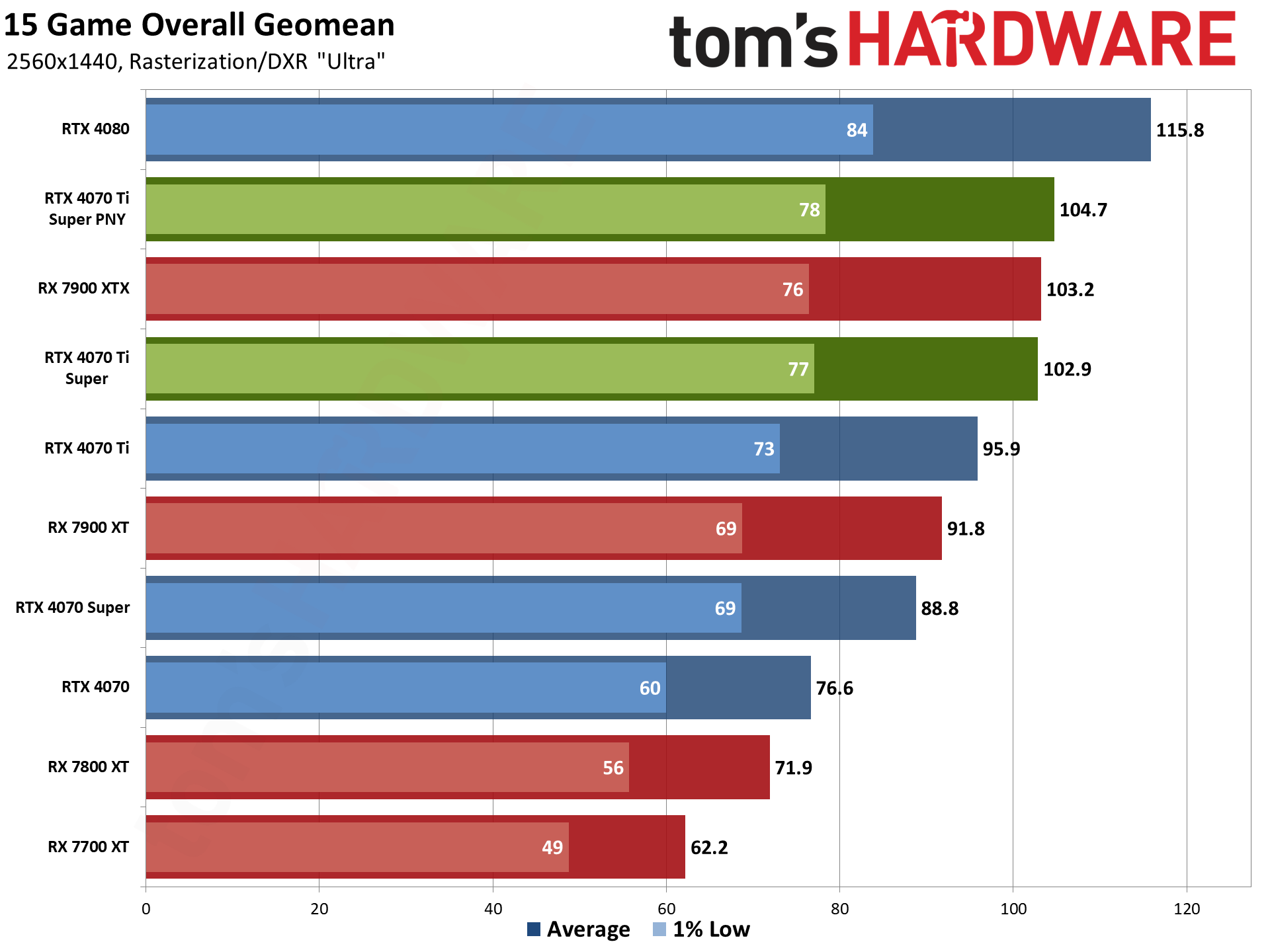
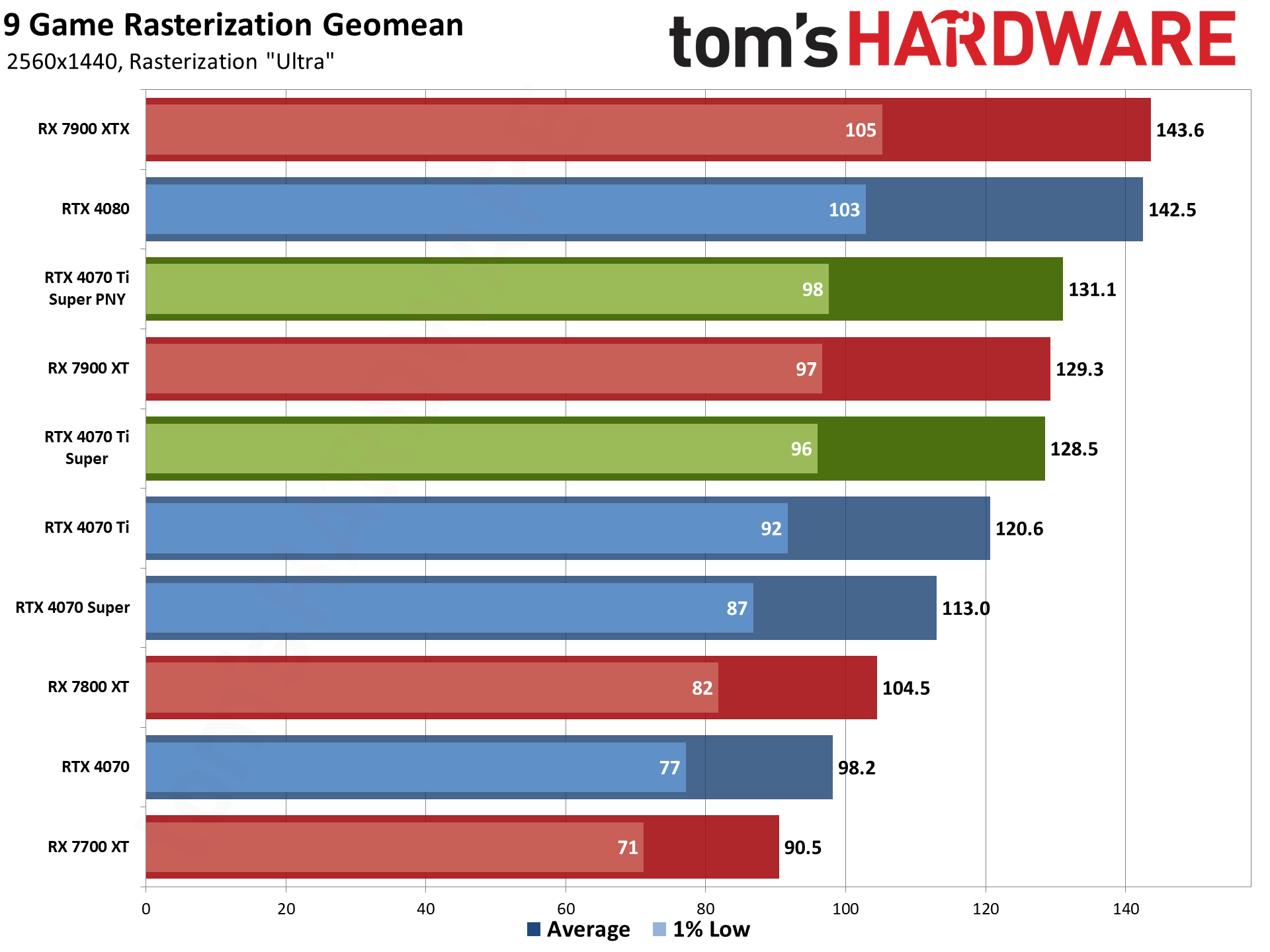



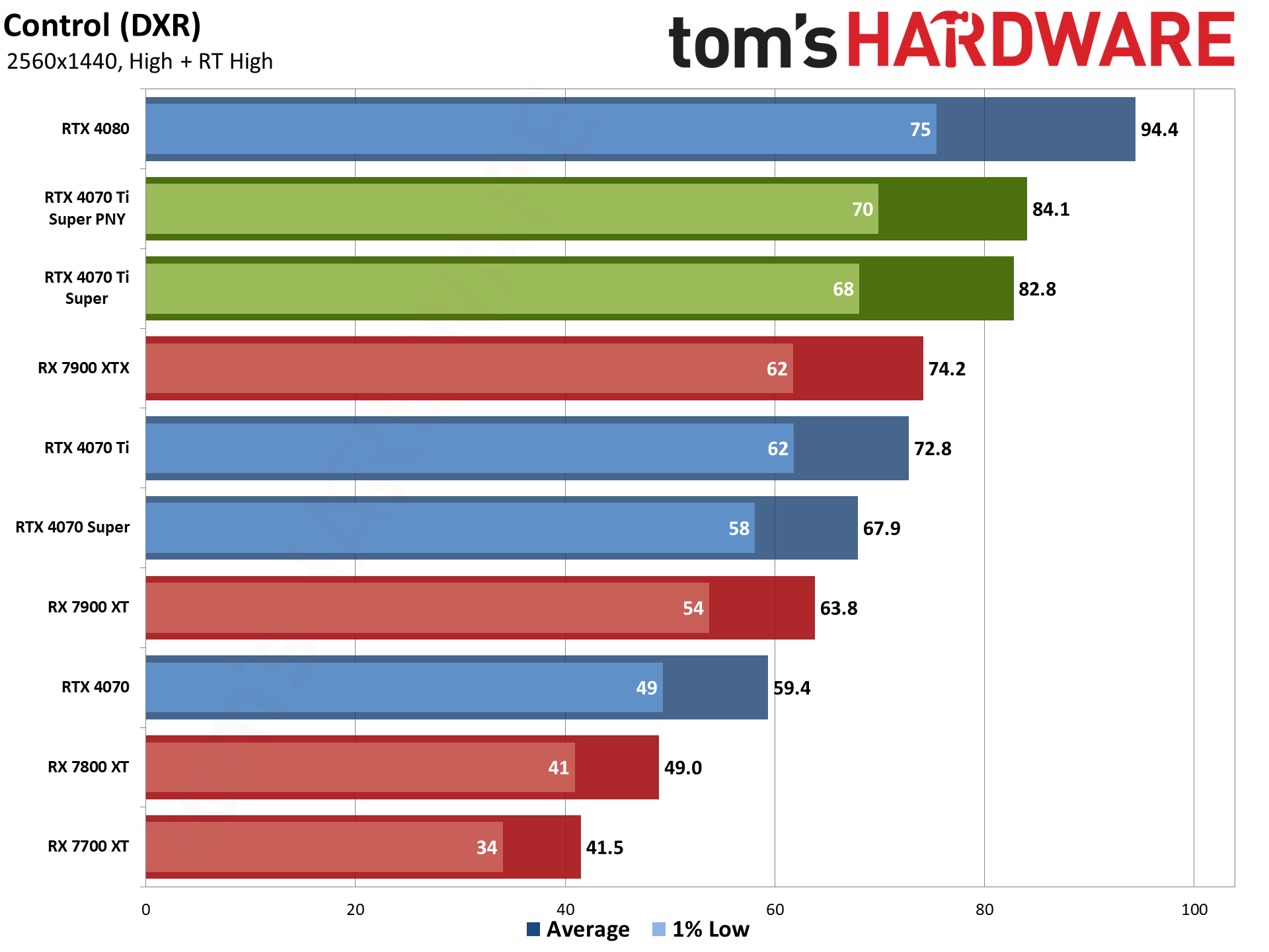


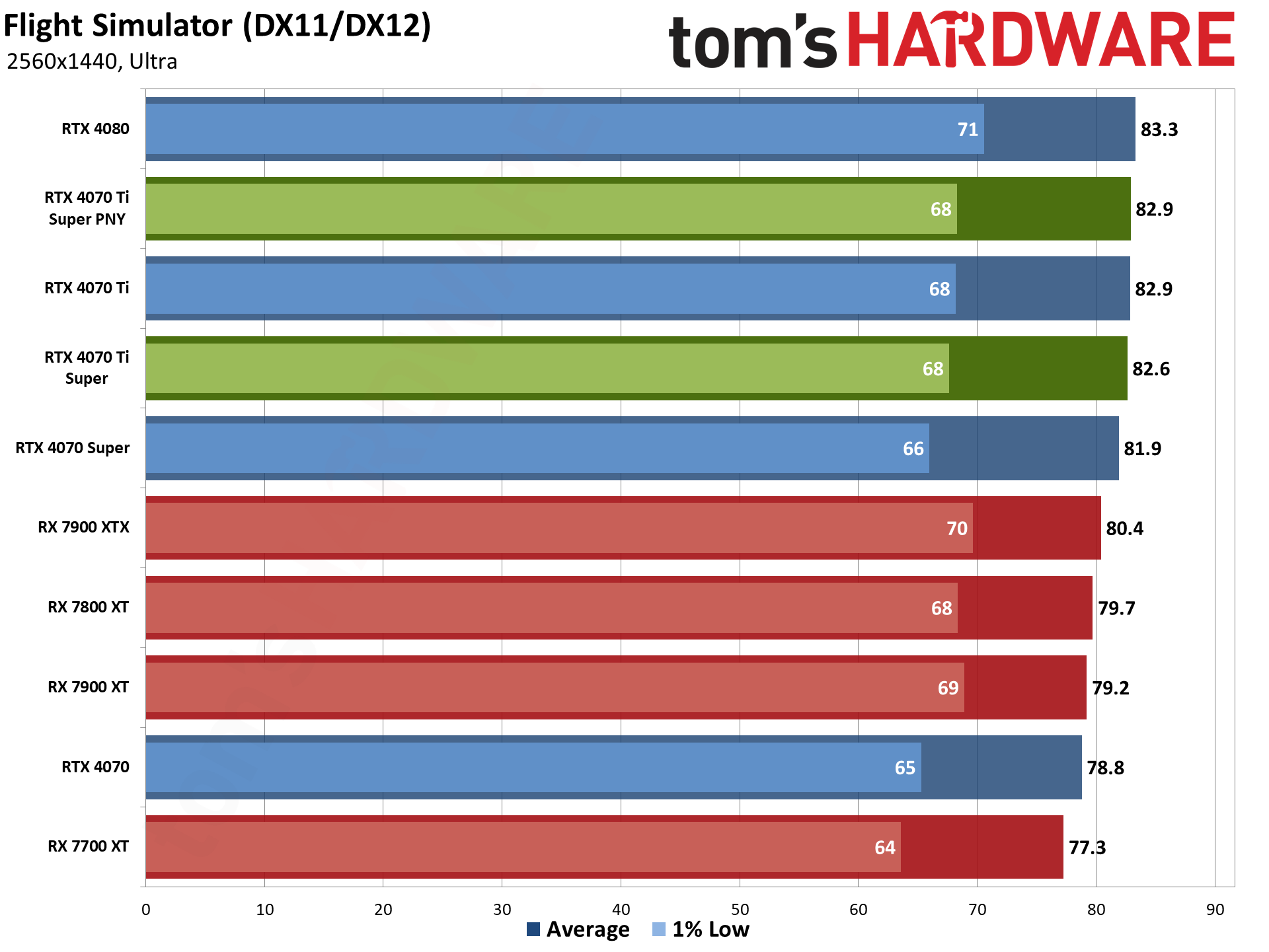
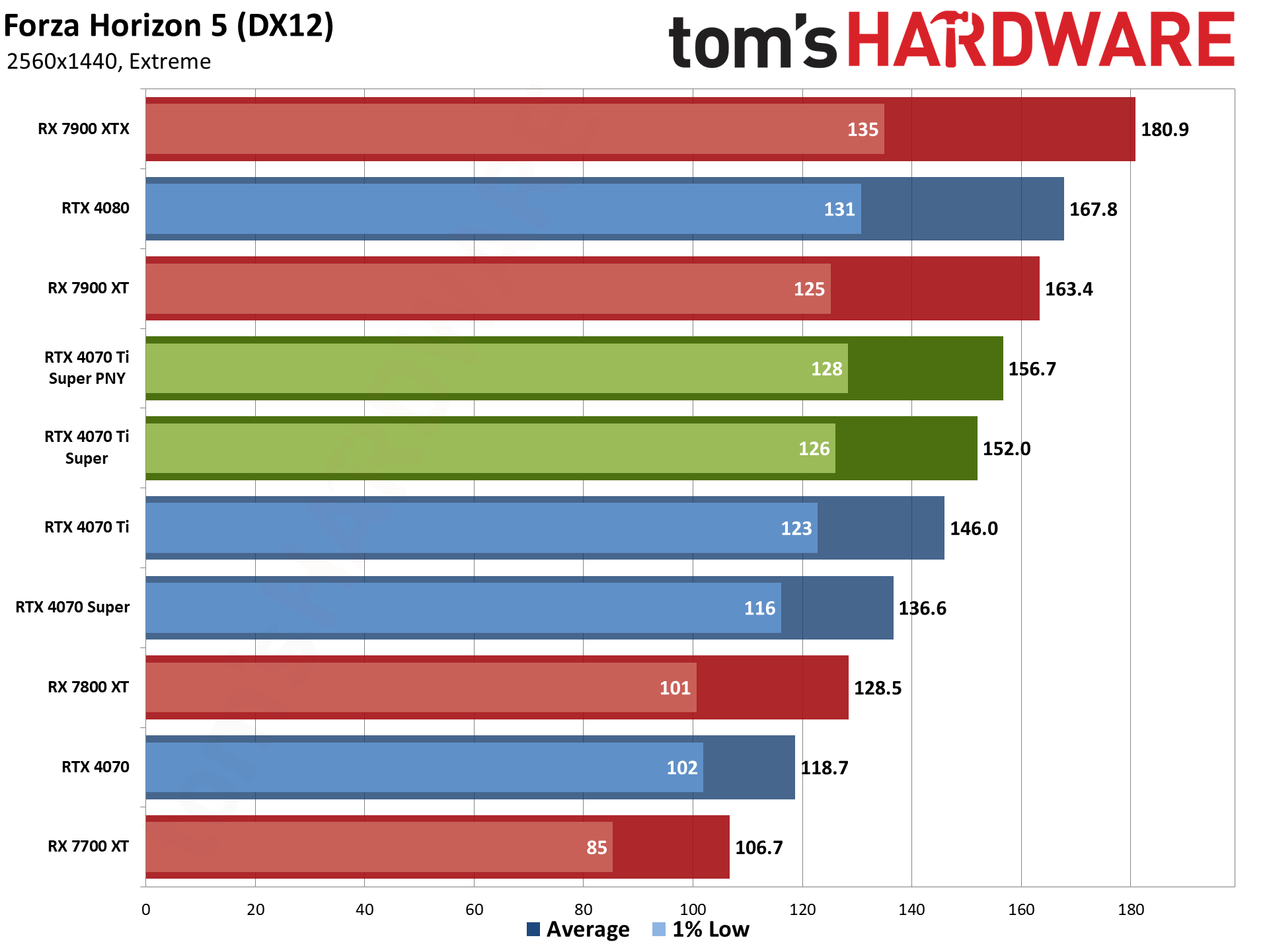
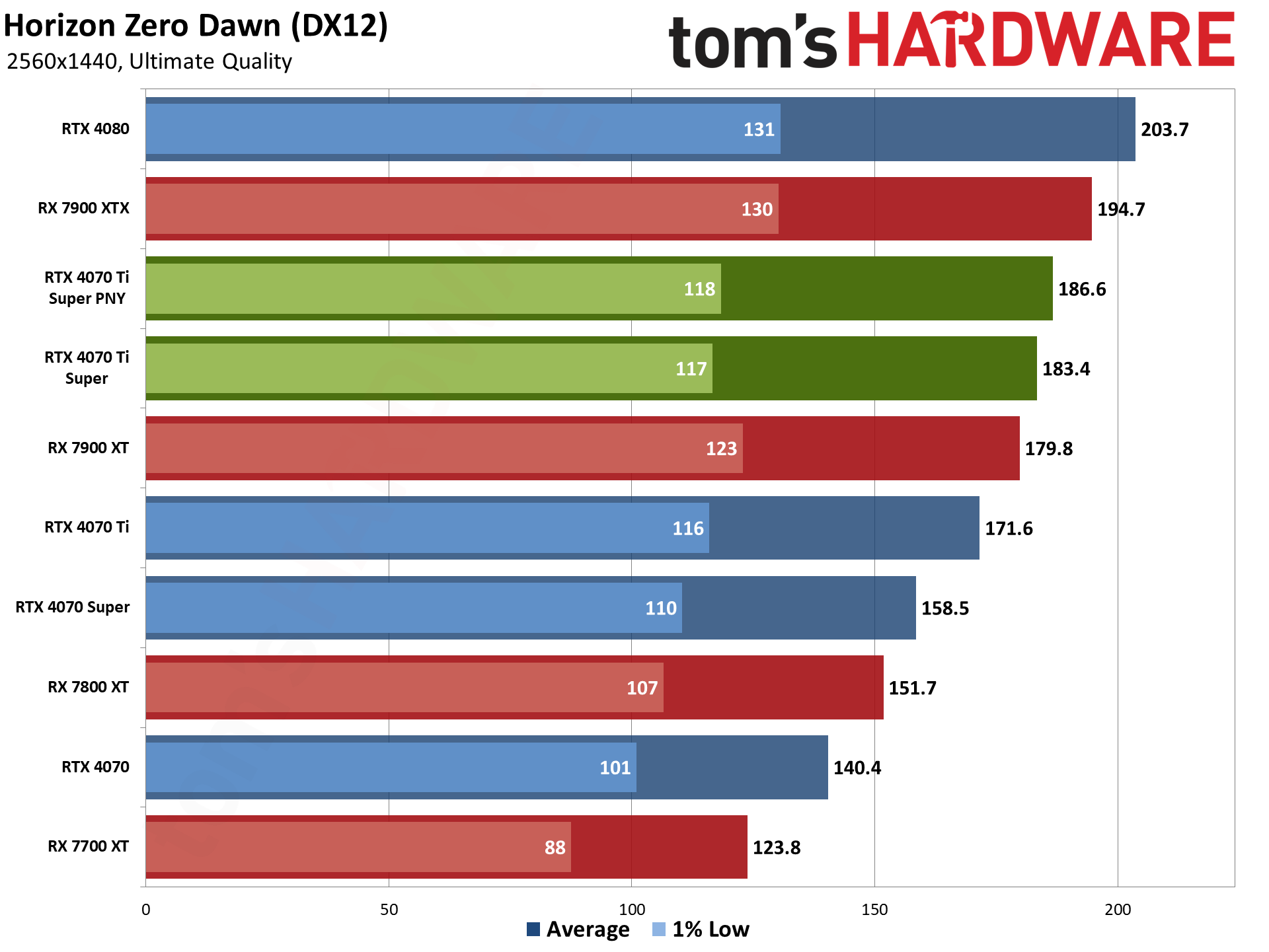

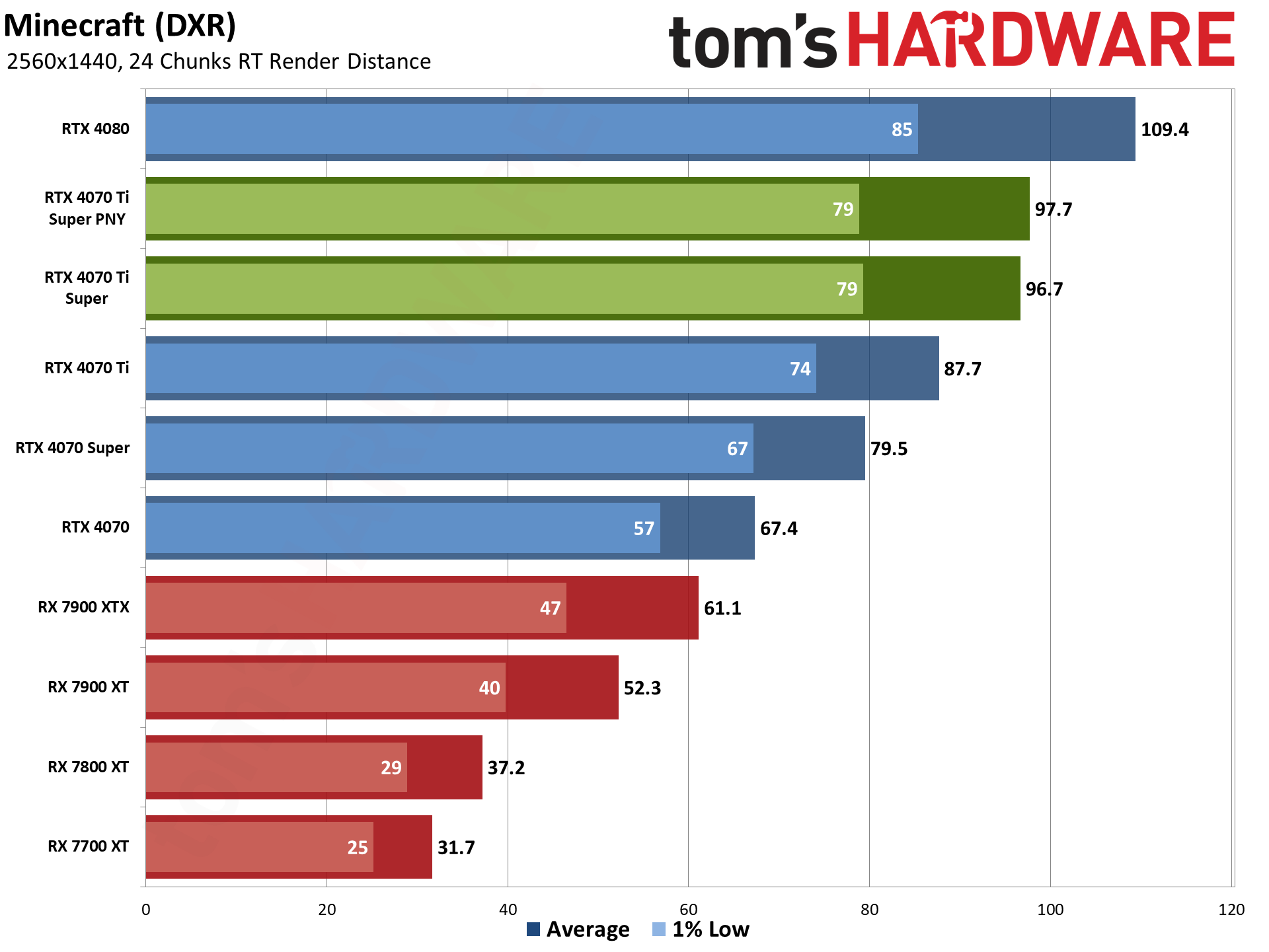

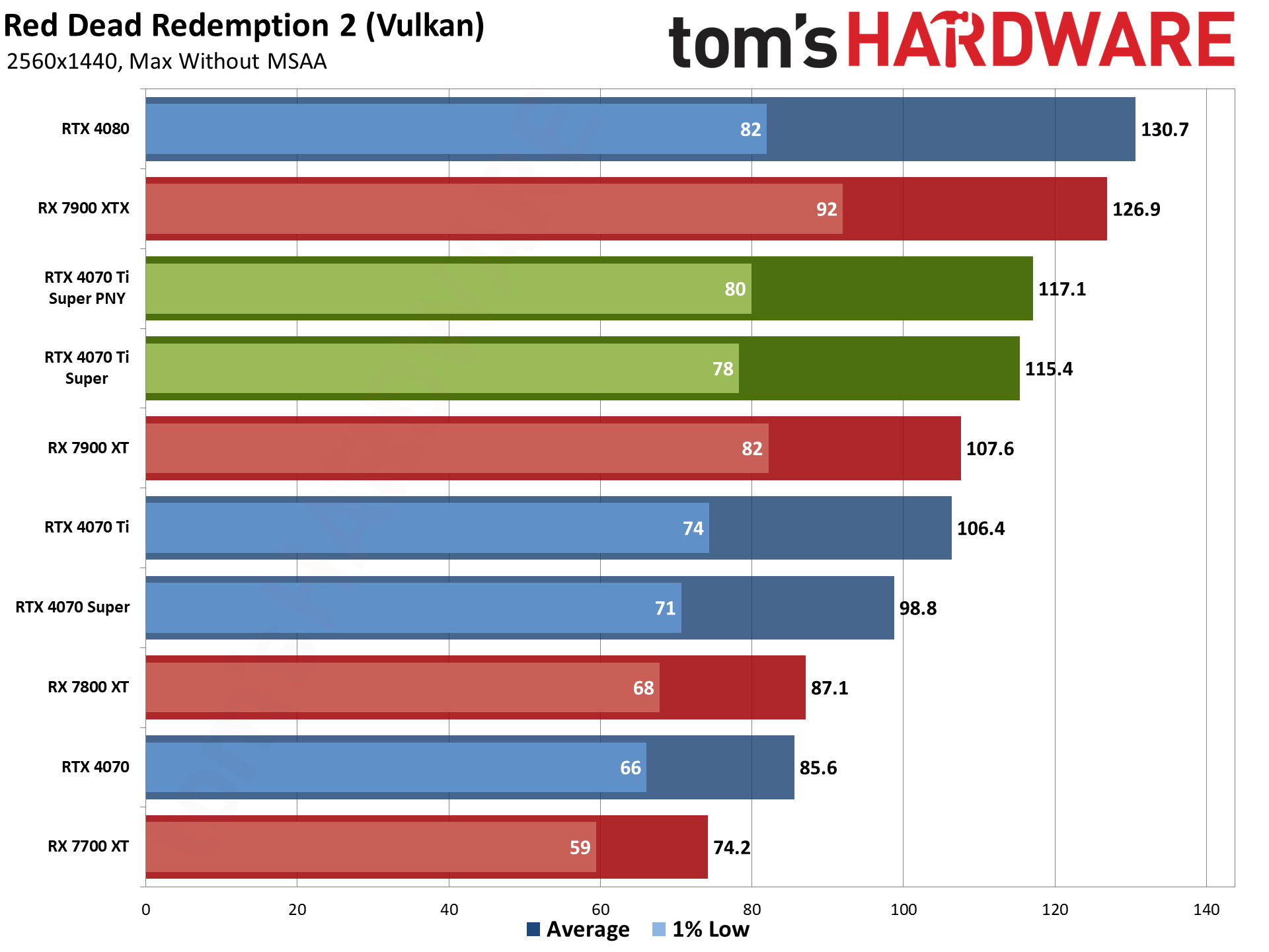
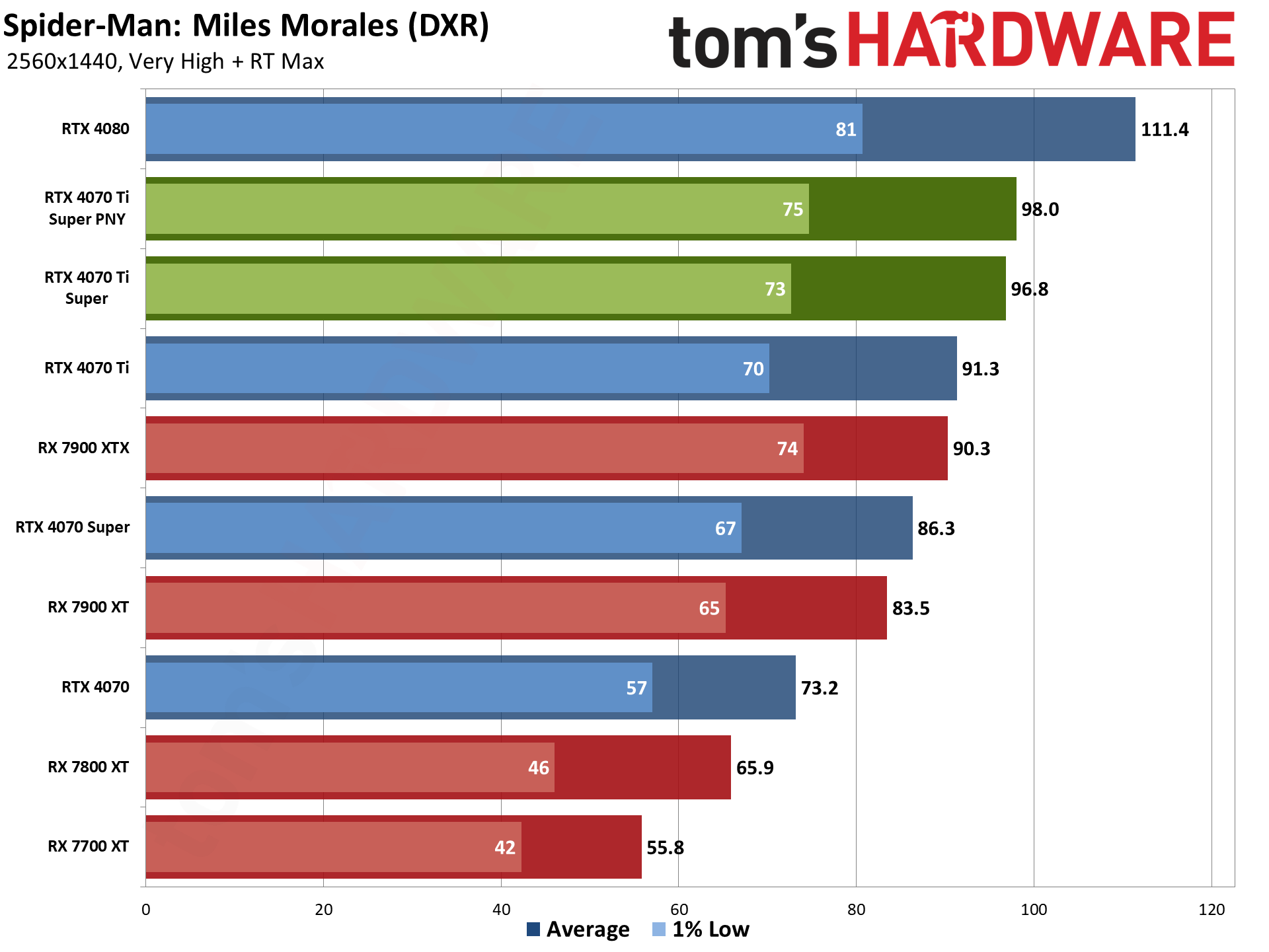
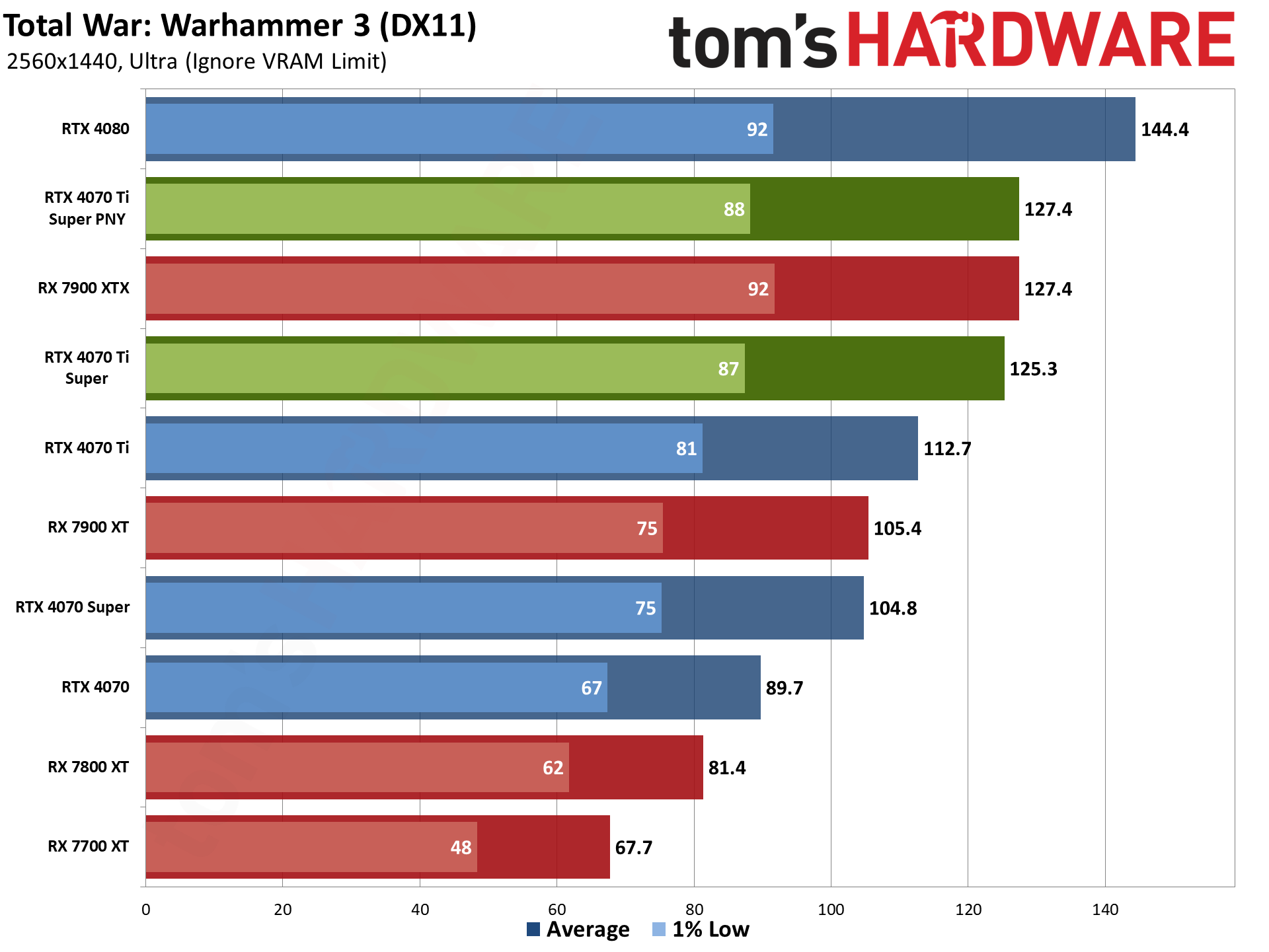
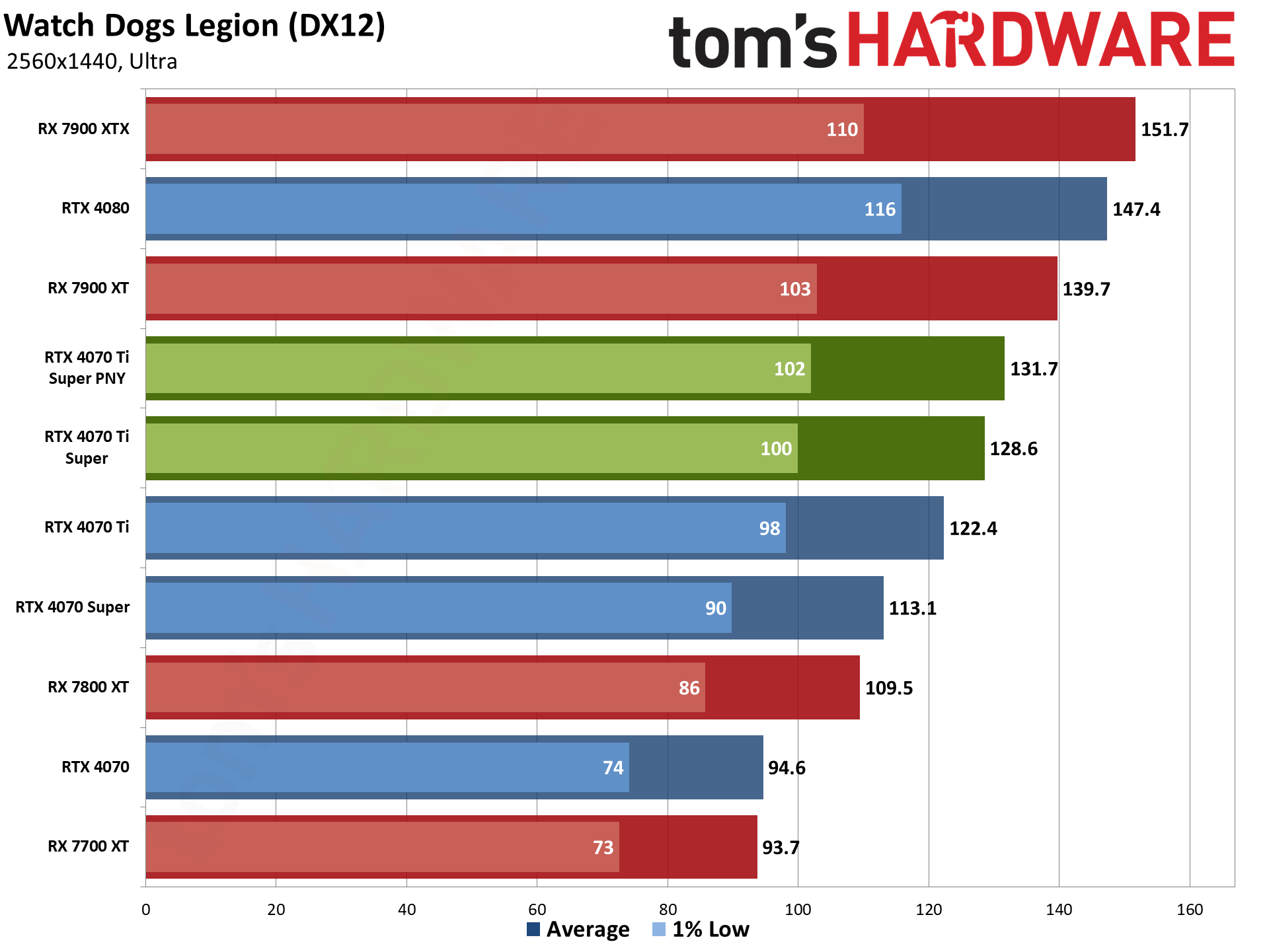
The main question we're looking to answer here is: What does the PNY card compared to a reference clocked card? The answer, as you can probably guess, is that it's not much. PNY's Verto OC consistently comes in a few percent ahead of the Asus card, but there's nothing that would be readily noticeable in normal used.
Overall, at 1440p the PNY card was 1.8% faster than the Asus card. In just the rasterization suite, that difference increased to 2.0%, and in ray tracing it dropped to 1.5%, but those are all practically within margin of error. Still, the PNY card is technically faster, and other aspects of the card might catch your eye.
Even if we look at the individual game results, there's not much to see. Across the full suite, the PNY card leads the Asus card by anywhere from 0.3% to 3.1%, with no clear indication of why certain games benefit more. We do run each test multiple times, discarding the first run and taking the best result of the remaining runs (after checking that the runs are reasonably consistent), but even then there's a bit of wiggle room.
As for the rest of the GPUs, our initial review covered the details, and there's nothing really new to report. A 2% improvement isn't enough to catch the RTX 4080, and the PNY card basically splits the difference between the vanilla 4070 Ti and the 4080. It's 9.2% faster than the 4070 Ti and 9.6% slower than the RTX 4080. The small improvement did allow the PNY card to squeak past the AMD RX 7900 XTX in the overall chart, though of course the individual games tell the full story: Faster DXR from Nvidia, faster rasterization from AMD.
We should note that, while we try to use reference cards whenever possible, both the 4070 Ti and 4070 Ti Super only shipped from third-party AIB partners. We used reference clocked Asus cards for both the "standard" models.
- MORE: Best Graphics Cards
- MORE: GPU Benchmarks and Hierarchy
- MORE: All Graphics Content
Get Tom's Hardware's best news and in-depth reviews, straight to your inbox.
Current page: PNY RTX 4070 Ti Super Verto OC: 1440p Gaming Performance
Prev Page PNY RTX 4070 Ti Super Verto OC Next Page PNY RTX 4070 Ti Super Verto OC: 4K Gaming Performance
Jarred Walton is a senior editor at Tom's Hardware focusing on everything GPU. He has been working as a tech journalist since 2004, writing for AnandTech, Maximum PC, and PC Gamer. From the first S3 Virge '3D decelerators' to today's GPUs, Jarred keeps up with all the latest graphics trends and is the one to ask about game performance.
-
Amdlova Two days to say the name of graphics.Reply
Because the name will sell like hot cakes.
Like the time when you have a simple model...
Now you have tier 1 2 3 4 5 lol -
Notton So it's US$50 extra for an average of 1-2 fps increase.Reply
And, okay, it runs about 8-10C cooler... on a card that already runs at a very cool 60-62C
Just why would anyone buy this? -
JarredWaltonGPU Reply
Da bling, man! How can you forget the bling? :ROFLMAO:Notton said:So it's US$50 extra for an average of 1-2 fps increase.
And, okay, it runs about 8-10C cooler... on a card that already runs at a very cool 60-62C
Just why would anyone buy this?
It's not just lower temps, but also slightly lower noise. So, noise, temps, and RGB are why anyone would buy this. Are those good enough reasons? Probably not for a lot of people, but I'm sure a few will bite. -
randomnorthern Reply
Too have a cool card that can run very quiet obviously. Mine runs under 50C under full load with only 120-160 watts. And it literally was the cheapest card here of them all.Notton said:So it's US$50 extra for an average of 1-2 fps increase.
And, okay, it runs about 8-10C cooler... on a card that already runs at a very cool 60-62C
Just why would anyone buy this?
